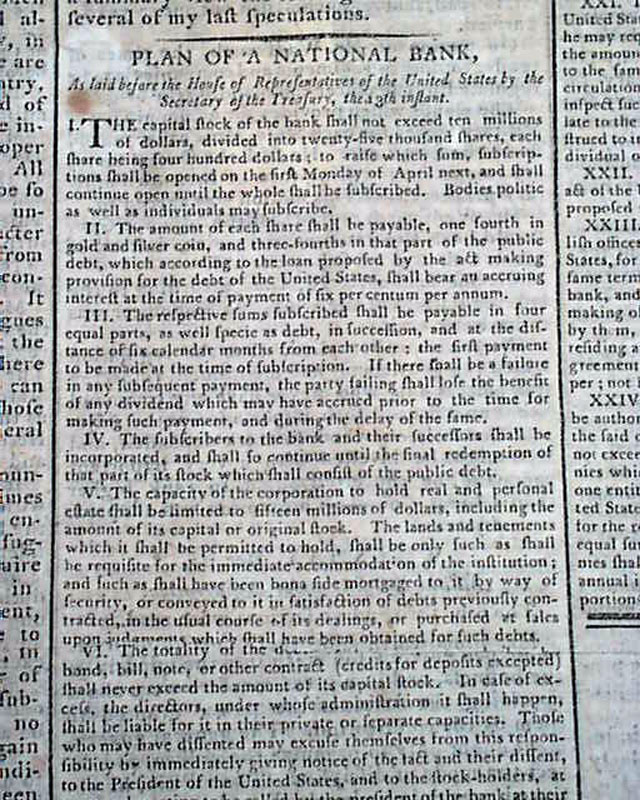Home >
Hamilton's historic plan for a National Bank...
Hamilton's historic plan for a National Bank...
Item # 705541
December 25, 1790
GAZETTE OF THE UNITED STATES, Philadelphia, Dec. 25, 1790
* First Bank of the United States planning
* Secretary of Treasury Alexander Hamilton
The front page has the" "Plan Of A National Bank, As laid before the House of Representatives of the United States by the Secretary of the Treasury, the 13th instant."
This was the very historic--and significant plan of Alexander Hamilton. On December 15 Hamilton submitted a report to Congress making the case. He proposed a Bank of the United States with a $10 million capital (then five times more than all other American banks combined) and the ability to issue paper money. It would be based in Philadelphia and chartered for 20 years.
All 24 sections of his plan are included, taking her a full column of the front page.
Page 3 has a letter from John Adams concerning the reduction of the United States debt, signed by him in type: John Adams. There are a few items on page 3 which related to President George Washington, including two appointments, and the anticipation of his formal address to Congress.
On the back page is the first part of Hamilton's report on public credit which was presented at the same time with the National Bank plan. This report on public credit is continued in a future issue.
Four pages, very nice condition.
AI notes: In 1790, Alexander Hamilton, serving as the first U.S. Secretary of the Treasury, proposed the creation of a national bank as part of his broader plan to stabilize and strengthen the fledgling American economy. His “Report on a National Bank,” submitted to Congress in December 1790, outlined a central financial institution that would be partly owned by the government and partly by private investors. The bank would serve several purposes: it would provide a safe depository for federal funds, facilitate tax collection, issue a stable national currency, and extend credit to the government and private enterprises to promote economic growth. Hamilton argued that such a bank was necessary and proper for executing the government’s fiscal powers under the Constitution. Opponents like Thomas Jefferson and James Madison denounced the plan as unconstitutional, claiming it exceeded federal authority and threatened state sovereignty. Despite the controversy, Hamilton’s proposal led to the establishment of the First Bank of the United States in 1791, headquartered in Philadelphia, marking a key step in shaping America’s modern financial system.
Category: The 1600's and 1700's



















